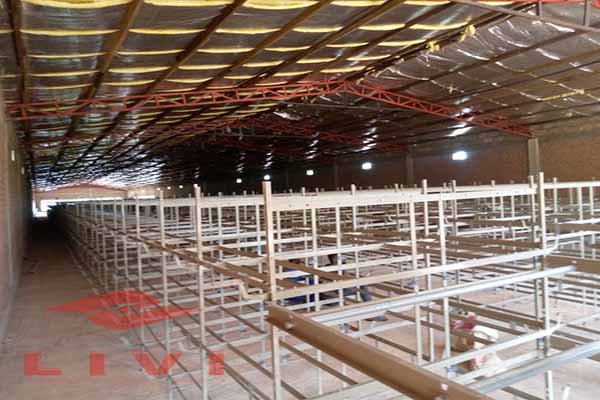How to Start a Chicken Farm in Australia: A Comprehensive Guide
Time : 2025-04-18
Are you thinking about starting a chicken farm in Australia? It’s an exciting venture that requires careful planning and consideration. In this article, we’ll go through the essential steps to help you kickstart your chicken farming business. So, let’s dive in!
1. Research and Plan
Before you even think about setting up a chicken farm, it’s crucial to do thorough research. Here are a few key points to consider:
a. Market Research
Understand the market demand for chicken products in your area. Are there enough customers to support your farm? Are there competitors nearby? Analyze the competition and identify your unique selling points.
b. Farm Location
Choose a suitable location for your farm. Consider factors like accessibility, land availability, water sources, and proximity to markets. Australia has diverse climates, so choose a place that suits your desired chicken breed.
c. Breed Selection
Decide on the type of chicken you want to raise. Different breeds have different needs and produce different products. For example, some breeds are better for laying eggs, while others are more suitable for meat production.
2. Legal Requirements
Before you can start your chicken farm, you need to comply with various legal requirements:
a. Business Registration
Register your farm as a business. This will help you keep your personal and business finances separate.
b. Zoning Approval
Ensure that your farm complies with local zoning regulations. Some areas may have restrictions on agricultural activities.
c. Biosecurity Plan
Develop a biosecurity plan to prevent the spread of diseases. Australia has strict biosecurity measures to protect its livestock industry.
3. Infrastructure and Equipment
Once you have all the legalities sorted, it’s time to set up your farm:
a. Chicken Coops
Build or purchase chicken coops that provide enough space for your chickens to move around comfortably. Consider factors like ventilation, temperature control, and safety from predators.
b. Feeding and Watering Equipment
Invest in high-quality feeders and waterers to ensure your chickens receive proper nutrition and hydration. Automatic feeders and waterers can save you time and labor.
c. Lighting and Heating
Chickens require consistent lighting and heating, especially during the colder months. Install a reliable lighting system and consider heating options to keep your chickens comfortable year-round.
4. Raising Chickens
Once your infrastructure is in place, it’s time to raise your chickens:
a.雏鸡孵化
Purchase chicks from a reputable breeder. Ensure that the chicks are healthy and suited to your chosen breed.
b.饲养和管理
Follow proper chicken care guidelines, including feeding, watering, and regular health checks. Monitor their growth and development, and adjust their diet accordingly.
c. Biosecurity Measures
Implement biosecurity measures to protect your chickens from diseases. Regularly clean and disinfect your facilities, and be cautious when bringing new animals onto the farm.
5. Marketing and Sales
Now that you have your chickens, it’s time to market and sell your products:
a. Establish Relationships
Build relationships with local markets, restaurants, and wholesalers. Offer quality products at competitive prices.
b. Branding
Create a unique brand for your chicken farm. A strong brand can help you stand out from the competition.
c. Online Presence
Develop a website or social media pages to showcase your farm and products. This will help you reach a wider audience and increase your sales.
6. Ongoing Challenges and Solutions
Starting a chicken farm in Australia can be challenging, but with the right approach, you can overcome obstacles:
a. Weather Conditions
Australia experiences diverse weather conditions, which can impact your farm. Prepare for extreme temperatures and ensure your infrastructure can withstand them.
b. Market Fluctuations
Keep an eye on market trends and be prepared to adapt your business strategy accordingly. Diversify your product offerings to mitigate the risk of market fluctuations.
c. Disease Outbreaks
Stay informed about disease outbreaks and take proactive measures to prevent them. Regularly update your biosecurity plan and be prepared to respond quickly if necessary.
Conclusion
Starting a chicken farm in Australia is a rewarding endeavor that requires careful planning and dedication. By following this comprehensive guide, you can set yourself up for success. Remember to stay informed, adapt to changes, and always prioritize the health and well-being of your chickens.












